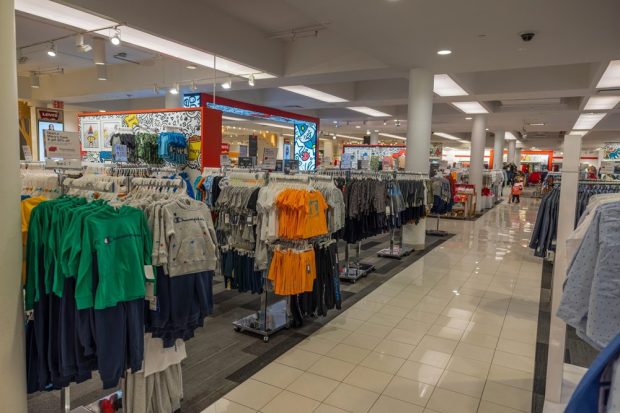Latest Fed Hike May Stymie Retailers’ Efforts to Clear Inventories

We’ve reached a milestone with interest rates — and by extension, retailers may find it tougher to sell their inventories.
As the world knows by now, the Federal Reserve boosted the target range for its benchmark interest rate by 0.25%. And we’ve crossed a threshold, now, above 5%, and we’ve not been here in 16 years.
It’s important to note that the central bank is also leaving the door open for more rate hikes because, as Fed Chair Jerome Powell said on Wednesday, “a decision had not been made” on a pause.
Along with the rate hikes, the costs tied to everyday life get more expensive, not just for consumers but for businesses too.
Looking at the Inventory/Sales Ratios
There are already signs that the shelves — virtual ones and those located in brick-and-mortar retail settings — have been well-stocked. And headed into the summer months and then the all-important holiday season, the rate hikes and continued specter of inflation won’t make things easier on the retailers. In April, the Census Bureau released a report that showed that total retail trade inventories were up, as measured in February, by 7.2%, excluding motor vehicles and parts on a seasonally adjusted basis.
The inventory/sales ratio crept up in several categories such as clothing, where the ratio was 2.2, vs. 2% a year ago. Furniture, home furnishing and electronics and appliance stores notched higher inventory/sales ratios, too, at 1.6 versus 1.5 a year ago. Merchant wholesalers — where the goods travel through those channels before winding up on shelves — logged an inventory/sales ratio of 1.4 versus 1.2 last February.
With earnings reports rolling in and Amazon as a key harbinger, consumers show that they are pulling back. In our coverage of Amazon’s results, we noted that net sales at online stores was up 3%, and management remarked on the conference call with analysts that discretionary spending is moderating. Elsewhere, firms such as Hasbro have acknowledged in their earnings report that they are taking steps, via promotional activity, to clear inventories. Mattel is also taking steps to move inventory. The earnings reports that are yet to come in may reinforce these trends.
For companies, buying inventory becomes a dicier proposition: It’s becoming harder to gauge demand, and the goods are ever-more expensive, with new rate hikes in the mix. In the meantime, they’ve got to get as much sell-through as possible to make way for the demand they hope will materialize by year-end.
But other recent economic data show that disposable personal income was up 0.4%, and personal saving as a percentage of income was 5.1%. It may be the case that individuals and households are holding onto cash where they can. Couple that with PYMNTS data that show customers are going where the deals are: 56% of U.S. retail shoppers have switched merchants in the name of cost-cutting, and price influences 67% of shoppers’ choice of a large retailer. The read-across is that promotional activity may rule the next couple of months to the detriment of retailers’ already pinched margins.

